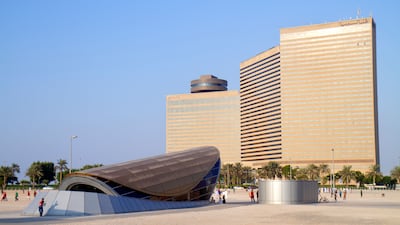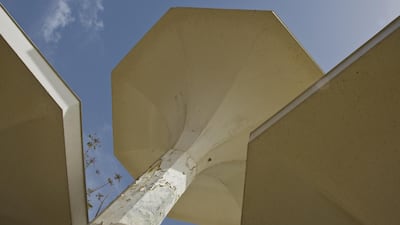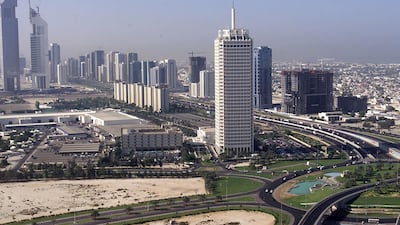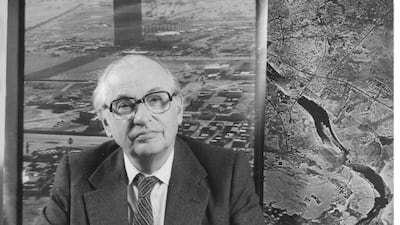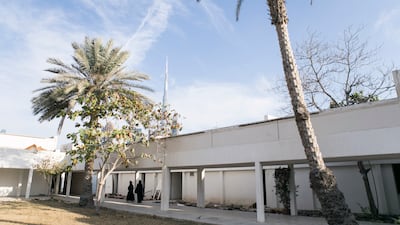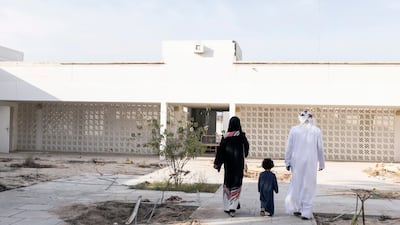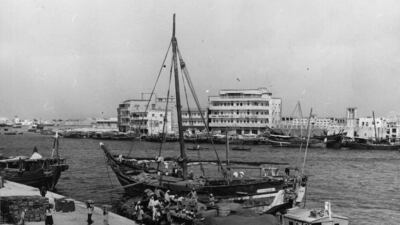Today, the areas on either side of the Creek are known as Old Dubai. Residents and tourists can be found there exploring the alleyways in the shadow of old merchant homes and wind towers.
In the 1960s, this was Downtown Dubai. But the city was about to experience a building boom that tilted it away from the Creek. And while these new developments were not made of coral or palm fronds, and while they didn't have wind towers, they did have a story to tell.
These new hotels, hospitals and schools represented Dubai's take on the modernist architectural movement that thrived in the US and Europe in the early 20th century and is known for its clean lines devoid of ornamentation.
“Some people think history stopped with the wind tower,” Maryam Ahli tells The National. “But that’s not true. It continues to be written in these modernist structures.”
Ahli, an Emirati architect and architectural historian, will speak at NYU Abu Dhabi Institute on Wednesday. Her talk — The Arrival of Late Modernism in Dubai — aims to reflect on how architects tweaked characteristics of the movement to suit the needs of Dubai in terms of style and practicalities, such as ventilation and privacy. It will also look at what these buildings mean to the city and how they can be preserved.
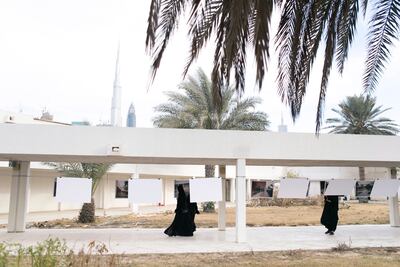
“A lot of people think it never came to this part of world,” says Ahli. “But it came to Dubai in the 1960s and 1970s. This is why I call it late. Then came a series of firsts: the first bank; the first hospital; the first hotel; and all have a clear distinctive stylistic approach that has not been practiced in the region.
“But it doesn’t 100 per cent follow the international movement. It responded to regional needs.”
Some of these buildings include Dubai World Trade Centre; Zabeel School for Girls; the Hyatt Regency Hotel in Deira; and the now-demolished Al Amal Psychiatric Hospital on Al Wasl Road.
The hospital, for example, was built in the early 1980s near where City Walk is today. Ahli says it was designed by British architect John Harris — the man behind the famous Dubai World Trade Centre — as a one-storey building constructed around courtyards.
“It resembled a traditional house and was very sensitive to the region,” says Ahli. Photographs taken before it was demolished several years ago show a low-rise building sympathetic to the environment with palm trees providing greenery and shade in the peaceful open-air areas.

These buildings, according to Ahli, should be considered as much a part of Dubai’s modern heritage as older coral stone buildings and wind towers. As well as architectural significance, they also act as a bridge between the different generations in Dubai and provide a sense of what is local in a globalised world.
“Those buildings have memories,” she says. “Older people saw them being built and contributed to their construction whether through investment or other ways. Then our generation used them. I went ice skating at the Hyatt Regency. Now the new generation sees them, but they don’t know what they are. So this architecture bridges the gap.”
There has been a sharp increase in interest over the past few years in the country’s older buildings. Restoration projects such as the Heart of Sharjah, Abu Dhabi’s Qasr Al Hosn, Sharjah Art Foundation’s rejuvenation of the Flying Saucer and the current project to restore Dubai’s Al Fahidi Fort have all helped to raise awareness about the country’s rich architectural heritage.
In Abu Dhabi, the Modern Heritage initiative aims to safeguard its architectural history, and in 2018, Dubai Municipality launched one of its own. Books such as Building Sharjah, edited by Sultan Al Qassemi and Todd Reisz have also helped.
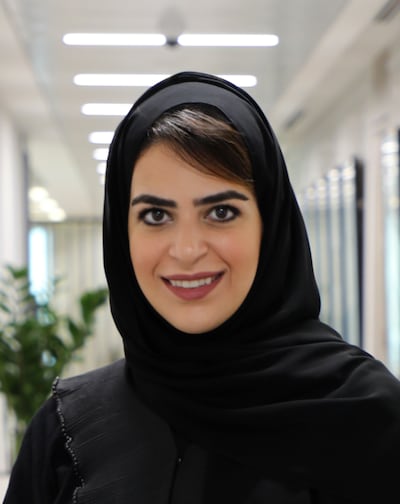
Ahli also believes in not only preserving buildings, but adapting them for today's world. She points to the restoration of Union House in Dubai — where the documents to form the UAE were signed in 1971 — as a good example of how an old building can be adapted for today’s world. And as projects manager at Dubai Culture, one of her current priorities is rehabilitating the Zabeel School for Girls building. It closed in 2010 and articles and a documentary about its history helped to save it.
Questions will always be asked about the fate of older buildings, but for Ahli, many of these modernist buildings were later demolished because people didn’t understand how important they were in telling the urban history of the city.
“I feel it is my responsibility as an Emirati to preserve rather than build; and to find new uses rather than construct new buildings. We need to make a conscious decision before building new things.
“I’m not against building new things, but we need to look at what worked in the past. Architecture doesn’t fail people, but people can sometimes fail architecture.”
The Arrival of Late Modernism in Dubai takes place at NYUAD Institute on Wednesday at 6.30pm. The talk is open to the public. More information is at www.nyuad.nyu.edu
